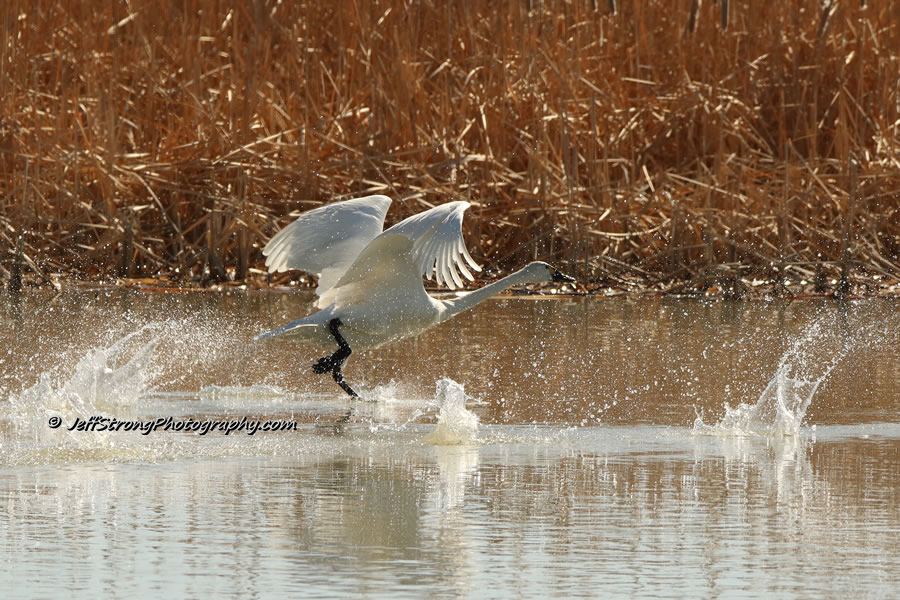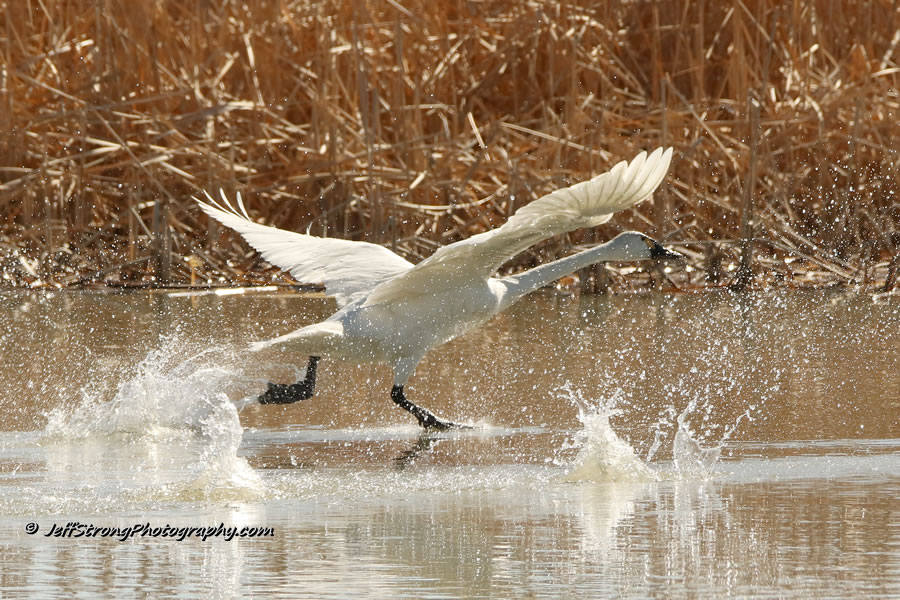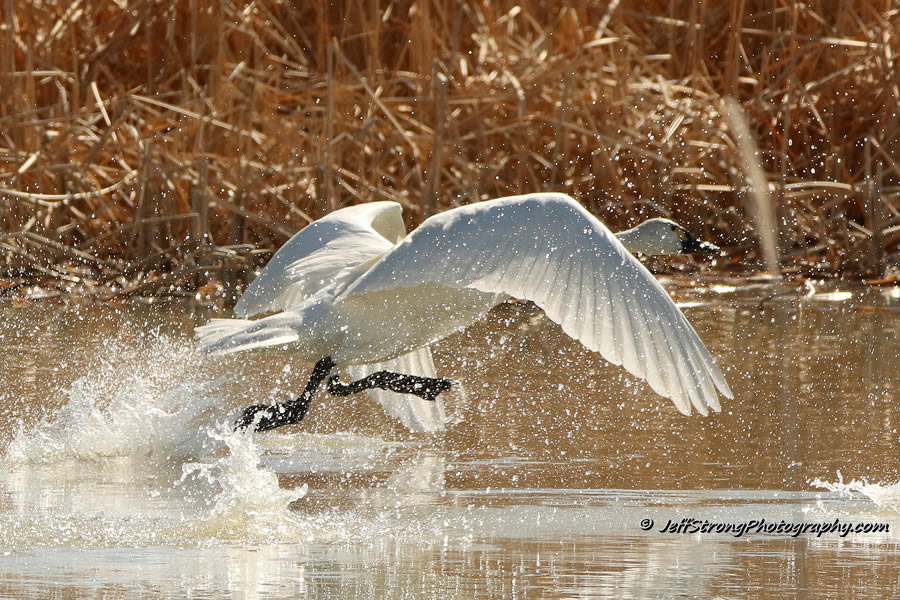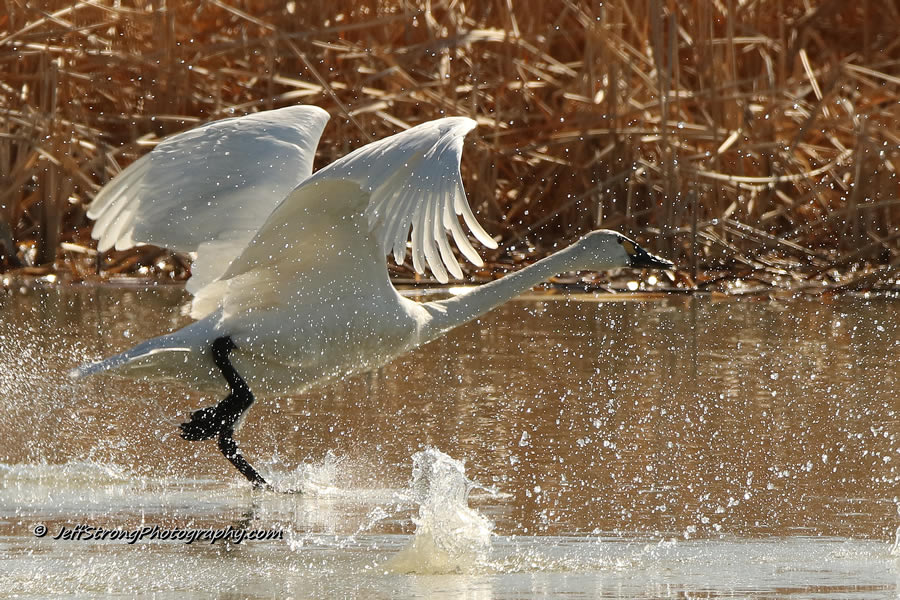A faint series of low-toned whoots could be heard from far off in the distance. As the sound grew louder, I recognized it as the distinct call of the tundra swan.
I had just finished a full day photographing birds on the Bear River Migratory Bird Refuge and surrounding area when I stopped to put my camera away for the drive home. A flock of about 25 tundra swans flew right over me in the classic v formation.
They were heading north on this unusually warm March evening. The call to make another leg of their long northward journey had once again compelled these large, very majestic birds to take to the air.

The sight of the tundra swan heading north is a bitter sweet moment for me. I am always excited for them to arrive on the Bear River Migratory Bird Refuge but I am always a little somber when they have to leave.
It is part of their life cycle, this long flight northward to the arctic tundra to breed for another year, but I hate to see the go. I know it is a vital part of their existence to travel back and forth from summer to winter habitats each year and I am glad I get to spend a few weeks with them as they stop over on the Bear River Migratory Bird Refuge to feed and rest for a while.
This year they arrived on the refuge a few weeks earlier than usual. The unseasonably warm, dry winter we have been experiencing has most certainly affected their usual migration pattern.

On this trip I had noticed a distinct drop in numbers of tundra swans on the refuge. Pelicans actually far outnumbered tundra swans by a very large margin.
I am not complaining, mind you, as I love the american while pelican. But seeing just a handful of tundra swans on the large freshwater marsh means I will have to wait until early November until I get to hear their distinct “whoot” again.

The images I have posted are from today’s trip around the refuge auto tour route. Only a couple swans were close enough to photograph but it allowed me to capture an interesting trait about the tundra swan.
As they take off from the water they essentially run across the water, making a sort of slapping sound as their feet and wings hit the water with every bit of propulsion the large swans can generate.

Amazingly enough the refuge auto tour route was very quiet and solitary for me on this trip. I had only encountered one other vehicle on this 3 hour photography excursion on the Bear River Migratory Bird Refuge auto tour route.
Signs of spring migration was quite apparent, however, with thousands of ducks all over the refuge. Western grebes, yellow-headed blackbirds and american avocets have also joined the growing population of birds returning to the refuge to breed for another season.
I will have plenty of birds to photograph on the Bear River Migratory Bird Refuge this year but admittedly I will miss the large white silhouette of tundra swans passing in front of the snow capped Wasatch mountains as they travel back and forth on the refuge.
For more information about the Bear River Migratory Bird Refuge, visit their website. Also, don’t forget to sign up for email notifications for future posts on our blog about the Bear River Migratory Bird Refuge and adjoining Great Salt Lake. Sign up information is available below in the footer section of this website.


